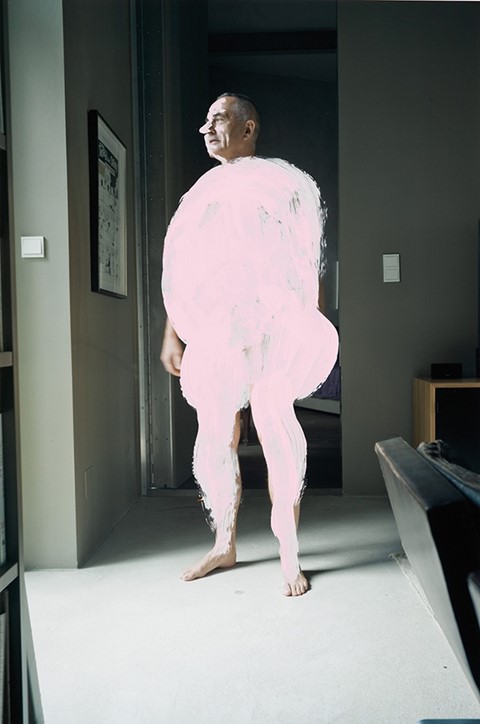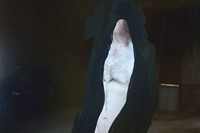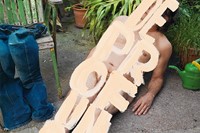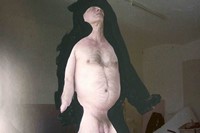It is disconcerting when an artist takes a sideways leap into new territory. But thus is the way of Erwin Wurm who, in his latest series of works titled De Profundis, has attempted the messy, painful question of aging...
It is disconcerting when an artist takes a sideways leap into new territory. But thus is the way of Erwin Wurm who, in his latest series of works, titled De Profundis, has left behind the clarity of his One Minute Sculptures, to take on the messy, painful question of aging. The photographs feature Wurm himself and other artists, stripped of their clothes, their eyes averted, in poses that recall devotional postures from Gothic and Renaissance paintings. Wurm has then taken the images and painted over them. In some, daubed lines of colour trace clumsily along the contours of the body, in others, the paint is used to playful or perhaps desecrating effect; the eyes obliterated, noses made protuberant, genitalia and pot-bellies emphasized. What was once ceremonial and solemn becomes playful, ridiculous, horrifying even; the physical form, in its natural state of decay is thrust to the forefront of our consciousness, despite the very modern human impulse to ignore or obfuscate this reality. The viewer is thus confronted “with bodies which make the laughter stick in our throats”, ghastly yet somehow beautiful testaments to the inevitable.
Here, as a means to better understand these extraordinary images, AnOther takes an extract from an interview between the author and Antonia Hoerschelmann that introduces the series, where Wurm discusses the inspiration and process behind his works.
"[A statue of Christ] has been in my possession for ten years; both its sculptural quality and the way man was represented in those days fascinates me. The focus is clearly on an attitude concerned with the end of life. The representational contents were of course informed by religion, by a special understanding of society, by a social agreement even. Suffering was something people accepted as part of life, while it is excluded from the everyday world today, as death is. Past generations were still under the influence of the image of the Gothic religious man who abandoned himself entirely to the hereafter… This is the context I wanted to explore: is it still possible at all today to render this expression, this typical posture of a spiritualized life?
"This is the context I wanted to explore: is it still possible at all today to render [the] expression, [the] typical posture of a spiritualized life?"
I wanted to have artists by all means [and] I wanted the figures to be completely thrown back on themselves in their poses. I wanted to reduce the figures entirely to themselves, to their bodies. All the people depicted are serious and thus convey a certain transcendence in the sense of the past. This is also why there is no eye contact. I wanted the viewer to remain a viewer. Everybody remains isolated within his own body.
[Working on the photos] a great vulnerability emerged. Overpainting, overdrawing, and overwriting a picture has quite a violent and offending dimension. I noticed that I liked to cover the eyes with paint to depersonalize the subject and make the picture more abstract. The results of my interventions have something rough and brutal. The new bodies mutilate the old bodies, some make us think of deformations or birth defects caused by thalidomide, others undergo a sex change. The way they are scratched across the bodies and into the subjects’ skin is also aggressive, covers things, makes things disappear.”
Erwin Wurm: De Profundis is out now, published by Hatje Cantz. The extended version of this interview appears in the introduction to the book.
Introduction by Tish Wrigley



